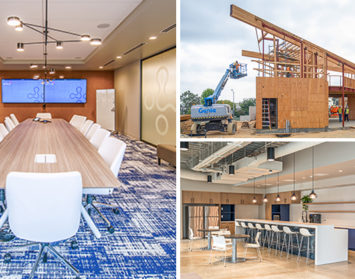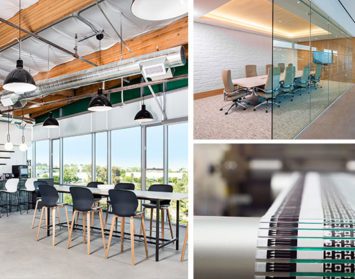By Hughes Marino PM
It has been five years since California implemented broad-sweeping changes known as the Title 24 Energy Code, and businesses everywhere were introduced to the sticker shock associated with the new requirements. Effective January 2020, new Title 24 standards were rolled out, forcing all local jurisdictions to adopt the new Title 24 – 2019 Building Energy Efficiency Standards. Additionally, some significant changes to the 2018 California Building Code (CBC) also came into effect.
The 2019 Energy Standards apply to newly constructed buildings, additions, alterations, and repairs to existing buildings. Focusing on improving energy efficiency, updates have been made to electrical, mechanical, building envelope and most notably, lighting systems. Additional changes focus on building structural strength, means of egress, stability, and other requirements to safeguard the health, safety and general welfare of the public, staff, emergency responders, etc.
Some of the most significant changes include:
Lighting:
- Lighting wattage allowances will be significantly decreased to be more in line with the previous LED requirements.
- Interior lighting occupancy controls will now need to be installed in restrooms of any size.
- Certain outdoor lighting controls will require dimming, vacancy response capabilities and shut-off controls.
- Lighting controls will be reviewed and accepted only by a Certified Lighting Controls Acceptance Test Technician (CLCATT).
Mechanical:
- Air filtration systems will require the use of MERV 13 filters or greater.
- Mechanical ventilation requirements have been aligned to ASHRAE 62.1.
- Ventilation, minimum exhaust rates and air classification tables have been added.
Changes to the 2018 California Building Code (CBC)/International Building Code (IBC):
- Due to changes in the seismic load calculation in the 2019 CBC, most buildings will see an approximately 10-25% increase in their steel designs.
- Fire sprinkler systems are needed for all Group A-1 occupancies, and all stories from the Group A-1 to the exit discharge level. For example, if you have an A-1 occupancy on the 5th floor, then all 5 floors to the ground floor exit need to be sprinklered.
- Fire retardant wood sheathing and framing are now allowed in exterior walls not exceeding 2hr rating in Type III and Type IV buildings.
- The biggest occupancy change in the 2019 CBC since the 1940’s code is the change from the traditional Business (B) occupancy from 1 person for every 100 square feet to now 1 person for every 150 square feet. For call centers, the updated code added a 1 person for every 50 square feet category. The 1 person per 150 square feet will reduce required stair widths and number of exits in traditional office building design.
So what does this mean to you as a business owner? Rising costs of construction. The severity will vary from project to project, and our Hughes Marino Program, Project and Construction Management team is happy to help you analyze the impacts! For more information, or to see what we’re doing to help clients navigate and stay ahead of the code changes, please call 1.844.662.6635 or email us at info@hughesmarino.com.
Hughes Marino’s industry leading Construction Management team has unmatched expertise in every type of commercial building project from tenant improvements to ground-up build-to-suits. With decades of experience in California and beyond, our project managers, engineers and LEED APs offer practical insights for the construction management professional.











